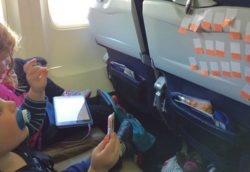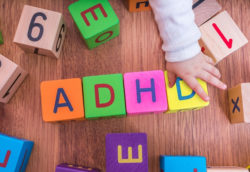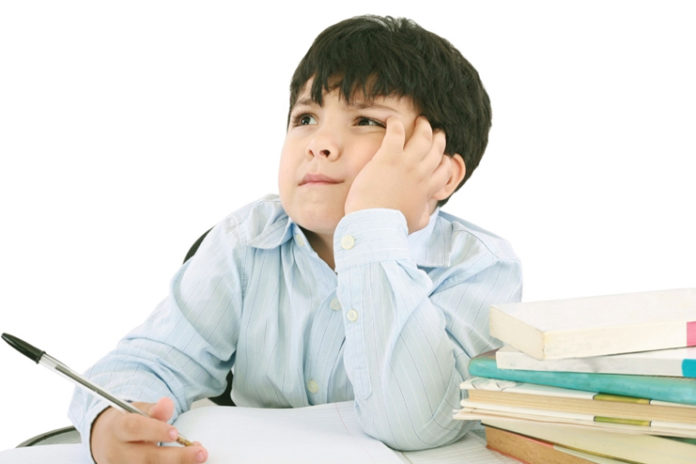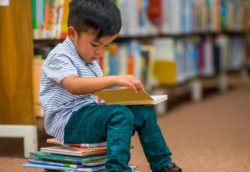Learning disabilities in children are very common. It is a neurological disorder, where a person has difficulty in learning. Here are the different types of learning disabilities, and problems which children face generally.
Causes Of Learning Disabilities:
A learning disability, occurs when the brain, is still in the developing process. Disability can even occur, before, during or soon after birth.
If a pregnant mother, has met with an accident or illness, a child can be born with a learning disability. Another possibility could be when an unborn baby starts developing certain genes.
If enough oxygen supply is not provided to the child, during child birth, or has a trauma to the head, or is a premature baby, these could be a few of the causes of learning disabilities in children.
A learning disability can also be caused by early childhood illnesses, accidents, and seizures, post birth.
Signs And Symptoms Of Learning Disabilities:
Children with a learning disability, have difficulty in reading, writing, spelling, reasoning, speaking, recalling, communicating with a parent.
Learning disabilities can also interfere with higher level skills such as organization, time planning, abstract reasoning, long or short term memory, and attention. Beyond academics, an individual’s life is affected, by the disabilities, and will even have an impact on relationships with family, friends and at the workplace.
Learning disabilities should not be compared with learning problems. Problems with learning may be a result of, visual, hearing, or motor handicaps, mental retardation, emotional disturbance or of environmental, cultural or economic disadvantages.
Learning Disabilities At Preschool Age:
Children with learning disabilities, at Preschool age, will have, pronunciation problems, trouble finding the right word, difficulty in rhyming, trouble learning the alphabet, numbers, colors, shapes, days of the week, difficulty following directions or learning routines and controlling crayons, pencils, and scissors, or coloring within the lines. They even face troubles with buttons, zippers, snaps, learning to tie shoes.
Learning Disabilities In Children Aged 5-9 Years:
Children with learning disabilities, from ages 5-9 years, will face trouble in learning the connection between letters and sounds, may be unable to blend sounds to make words, get confused by basic words when reading, are slow to learn new skills, always misspells words and makes frequent errors. They even have trouble in learning basic math concepts and face difficulty in telling time and remembering sequences.
Learning Disabilities In Children Aged 10-13 Years:
Children with learning disabilities, from ages 10-13 years, will have difficulty with reading comprehension or math skills, trouble with open-ended test questions and word problems, may dislike reading and writing; avoids reading aloud, will have a poor handwriting, will have poor organizational skills- their bedroom, homework or work desk may be messy and disorganized. They even have trouble following classroom discussions and expressing thoughts aloud. They spell the same word differently.
Types Of Learning Abilities:
Learning disabilities in children can be mild, moderate or severe. People with a mild learning disability can talk easily and look after themselves, but they take some time than usual to learn new skills. In a few individuals, they may not be able to communicate at all and have more than one disability.
However, people with a severe learning disability and multiple learning disabilities (PMLD), will have a sensory or physical disability, complex health needs, or mental health difficulties.
Common And Specific Types Of Learning Disabilities Are:
1. Dyslexia – Difficulty with Reading

This learning disability also referred to as Language-Based Learning Disability, affects reading and related language-based processing skills. The severity of this disability depends on every individual. It can affect reading fluency, decoding, reading comprehension, recall, writing, spelling, and sometimes speech and can exist along with other related disorders.
2. Dyscalculia – Difficulty with Math

This learning disability affects a person’s ability to understand numbers and learn math facts. They may also have poor comprehension of math symbols, may struggle with memorizing and organizing numbers, have difficulty telling time, or have trouble with counting.
3. Dysgraphia – Difficulty with Writing

This learning disability affects a person’s handwriting ability and fine motor skills(R). They may even face problems like illegible handwriting, inconsistent spacing, poor spatial planning on paper, poor spelling, and difficulty composing writing as well as thinking and writing at the same time.
4. Dyspraxia – Difficulty with Fine Motor Skills

A person with this disability will have difficulty in muscle control, which causes problems with movement and coordination, language and speech, and can affect learning.
5. Auditory Processing Disorder

This learning disability is also referred to as Central Auditory Processing Disorder. This disability, adversely affects an individual, how sound that travels unimpeded through the ear is processed or interpreted by the brain. These individuals may not be able to recognize subtle differences between sounds in words, even when the sounds are loud and clear enough to be heard.
People with this disability, even find hard to recognize, where sounds are coming from, to make sense of the order of sounds, or to block out competing for background noises.
6. Non-Verbal Learning Disabilities

An individual with Non-Verbal Learning Disabilities (NVLD), will face trouble in interpreting nonverbal cues like facial expressions or body language and may have poor coordination.
Other disorders that make learning difficult, are ADHD – Attention deficit hyperactivity disorder (ADHD), and autism in children(R).
How To Treat Learning Disabilities:
A learning disability can be a lifelong challenge. It cannot be cured or fixed. Providing proper support and intervention, people with learning disabilities can achieve success in school, at work, in relationships, and in the community.









































